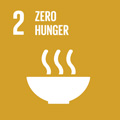- Docente: Elena Catelli
- Credits: 3
- SSD: VET/05
- Language: Italian
- Teaching Mode: In-person learning (entirely or partially)
- Campus: Bologna
- Corso: Single cycle degree programme (LMCU) in Veterinary Medicine (cod. 8617)
-
from Nov 11, 2025 to Jan 13, 2026
Learning outcomes
After completing of the course the student knows the main poultry diseases, biosecurity measures and vaccination plans applied to poultry. He will be able: to make diagnosis of the major poultry diseases, to set up biosecurity program and define specific vaccination programs for poultry.
Course contents
The course of Avian Diseases is part of the integrated course TRANSMISSIBLE DISEASES AND PUBLIC HEALTH.
The objective of the integrated course is provide the student with:
· Knowledge of etiopathogenesis, epidemiology, symptomatology, diagnosis, prevention and control of infectious diseases, including diseases transmissible to humans (zoonoses), of mammals, poultry and wild and exotic animals;
· Knowledge of the One Health approach to public health and of competences and actions that must be put in place by the vet in order to safeguard public health;
· The ability to carry out clinical and post-mortem investigations on poultry and wild and exotic animals.
The lecturer responsible for the final marking for the integrated course is Prof. Elena Catelli.
the course will deal with the following topics: Biosecurity and Vaccines and vaccination in poultry. Viral diseases of poultry: Newcastle Disease, Avian Influenza, Avian Metapneumovirus infections, Avian infectious Bronchitis, Infectious Laryngotracheitis, Fowlpox, Marek's disease and retrovirus infections, Infectious bursal disease, Reovirus and Adenovirus infections, Infectious anemia and avian encefalomielitis. Bacterial diseases of poultry: Avian Salmonellosis, Colibacillosis, Mycoplasmosis, Avian Tubercolosis , Pasteurellosisi and oulines of other bacterial diseases. Outlines of major Parasitic diseases of poultry: Coccidiosis, Histomoniasis, Trichomoniasis; Ectoparasites and Worms.
Readings/Bibliography
Files of Power point presentations used by the teacher during the lectures will be avialable on Virtuale.
It is suggeasted to use the following books for consultation:
- Asdrubali G e Fioretti A. - Manuale di Patologia Aviare- Le Point Veterinaire Italie - Milano, 2009.
- Diseases of Poultry, 14th Edition- David E. Swayne (Editor-in-Chief), M. Boulianne (Associate Editor), C.M. Longue (Associate Editor). R. McDougald (Associate Editor), L. K. Nolan (Associate Editor), V. L. Nair (Associate Editor) D. L. Suarez (Associate Editor) Wiley-Blackwell, 2020.
- Diseases of Poultry, 13th Edition- David E. Swayne (Editor-in-Chief), J. R. Glisson (Associate Editor), L. R. McDougald (Associate Editor), L. K. Nolan (Associate Editor), D. L. Suarez (Associate Editor), V. L. Nair (Associate Editor) Wiley-Blackwell, 2013
- Diseases of Poultry, 12th Edition - Saif Y.M. (Editor-in-Chief), Fadly A.M., Glisson J. R. , McDougald L.R., Nolan L.K., Swyne D.E. (Associate Editors), Wiley-Blackwell, June 2008.
- Pattison M., McMullin P., Bradbury J., Alexander D., Poultry Diseases, 6th Edition.,Saunders Ltd, 2007.
- Calnek B.W, Barnes H.J., Beard C.W., Mc Dougald L.R. and Saif Y.M. Patologia Aviare, 10a edizione. Ed. italiana a cura di Quaglio G., Gallazzi D., Cerruti Sola S., Tacconi G., Camarda A. Capua I., Franciosi C. Piccin Nuova Libraria S.p.A., Padova, 2001.
- Randall C.J. A Cololour Atlas of Diseases and Disorders of Domestic fowls and Turkeys. Mosby, 1990.
To better understand the clinical, macroscopic and microscopic aspectes of the diseases it is suggested to consult the following websites:
- https://www.thepoultrysite.com/publications/diseases-of-poultry
- https://www.thepoultrysite.com/knowledge-centre
- https://www.poultrymed.com/Atlas-of-Pathology
Teaching methods
The teaching of Avian Pathology is part of the University's educational innovation project and will therefore be delivered in a "Blended Learning" format.
The course consists of lectures, of which:
- 20 hours will be held in person,
- 10 hours will be recorded on Panopto and delivered online via the virtual platform, and
- 6 hours will be seminars.
During the course activities, illustrative images and videos from clinical cases or experimental trials will be used.
The practical and hands-on component of the course is carried out during MODULE 1 of the internship in "Avian diseases and diseases of wildlife and exotic animals", which is part of the integrated course on transmissible diseases and public health.
Assessment methods
The assessment takes place through an oral interview of about 20 minutes:
- Preparation on a limited number of topics. Analytical skills that emerge only with the help of the teacher. Overall correct language property (18-19)
- Preparation on a limited number of topics. Autonomous analysis capability. Correct language property (20-24)
- Preparation on a large number of topics. Ability to make autonomous choices of critical analysis. Mastery of specific terminology (25-29)
- Comprehensive preparation of the topics. Ability to make autonomous choices of critical analysis and connection. Full mastery of specific terminology (30-30L)
Access to the exam is open. The test lasts approximately 20 minutes, and no aids are allowed, except for students who are entitled to use them. Students can register for the exam exclusively through the AlmaEsami online system, following the procedures provided.
Teaching tools
Classroom supplied with multimedia equipment (web-connected PC and PC video-projector).
Office hours
See the website of Elena Catelli
SDGs



This teaching activity contributes to the achievement of the Sustainable Development Goals of the UN 2030 Agenda.
